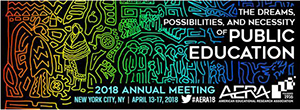The benefits of including diversity in the curriculum have been noted by researchers for quite some time, such as increased critical thinking and decreased racial prejudice. However, if we focus only on designated "diversity" courses in general education curriculum, we likely miss out on other ways to offer students these learning opportunities. Tom Nelson Laird set out to better understand the ways that faculty members include diversity into their courses by developing the "Diversity Inclusivity Model." This model allows us to examine how, rather than whether, a course includes diversity. In a paper presented at the 2018 AERA annual forum, we sought to update Nelson Laird's previous work to see if there have been changes in how much faculty reporting including diversity in their course and what faculty demographics and characteristics influence how much faculty include diversity into their courses.
Diversity Inclusivity Model

Adapted from Nelson Laird (2014)
In this study, we looked at the 12 individual diversity inclusivity survey items within two scales: Diverse Grounding and Inclusive Learning. Diverse Grounding encompasses four of the course elements of Nelson Laird's model: purpose/goals, content, foundations/perspectives, and instructors. Inclusive Learning encompasses the other five course elements, we are learners, pedagogy, classroom environment, assessment/evaluation, and adjustment.
We found that a higher percentage of faculty incorporated Inclusive Learning practices "Quite a bit" or "Very Much" (67%-92%) than Diverse Grounding practices (49%-77). Women, LGBQ+ faculty, faculty of color, faculty who teach a heavier load, and faculty from the non-STEM fields tend to include diversity in their courses more than their colleagues. All of these mirror Nelson Laird's (2011) findings. The course format and diversity requirement measures were particularly important predictors. Interestingly, faculty who teach in classrooms at auxiliary locations (sites not on the main campus) were much more likely to include diversity than their colleagues teaching on campus.
Faculty perceptions of commitment to diversity on their campuses were strongly related to the both the Diverse Grounding and Inclusive Learning scales, suggesting the more one includes diversity. This measure was not included in Nelson Laird's (2011) study.
Overall, a majority of instructors report engaging in elements of both facets of diversity inclusivity. However, while our results validate Nelson Laird's model, and 2011 study, they also indicate that dramatic improvements in diversity inclusivity likely have not been made in last decade.
Faculty who are more likely to have experienced oppression are also more likely to include diversity in their courses more than colleagues who haven't. Institutions need to consider reframing who "should" be responsible for doing this work, so that all faculty both have the opportunity to learn skillful ways of including these practices and feel the responsibility to do so. Also, faculty perceptions of institutional commitment to diversity is an important predictor of diversity inclusivity, which means that department and institutional leaders have an opportunity to influence the degree to which instructors incorporate diversity inclusivity into their courses.


